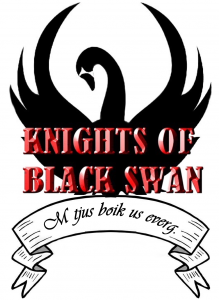If you’re interested in books with supernatural flavoring, you may have noticed the confusion surrounding genre titling. When My Familiar Stranger was published, I started out calling it Paranormal Romance. It seemed like a good description, simple and to the point. It’s a romance with paranormal elements. Right? The answer to that question seems to be: well… maybe.
My first clue that the current labels weren’t working for me was when I began getting reviews saying, “I don’t really know what genre to put this book in…” Confidentially, those comments make me want to jump up and do a victory dance and here’s why.
Once I had decided I wanted to write, I set out to perform due diligence. I spent two years reading everything in the PNR category that had enjoyed any success at all. At the end of that time I felt like I had a good overview of what had already been written and I set out to do something different.
The end result has been called a paranormal romance with a dash of scifi and a dollop of fantasy. Okay, if it doesn’t conform to formula, then I met one of my goals.
About that time I began to notice that confusion was creeping into the labeling process. So, undertaking my own examination, I was surprised by the results. In the ebook department of Amazon.com, the navigation drill down goes: Fiction – Genre Fiction – Romance – Fantasy, Futuristic, and Ghost. At first this struck me as strange because I think most readers of PNR would be searching under Paranormal Romance.
On the other hand, Fantasy, Futuristic, and Ghost may be both more descriptive and more accurate. Breaking it down I began to understand the logic behind this departure from the norm. For me, time travel romance doesn’t fall under PNR. It’s Sci-Fi Romance. But it fits beautifully under a “Futuristic” label.
Starting at the beginning, the first question is and should be, “Is it a Romance?”
In general fiction, a typical novel will feature a romance as a subplot of interest. Just as a Romance needs situational distress to vary the speed and intensity of delivery, the thriller needs romance to do the same. That does not make the book a Romance. To qualify as a Romance with a capital “R”, the romantic interest must be the main plot. It is the driving force, the book’s reason for existing. We don’t have to have character growth or a mystery solved or a quest undertaken. The question we must have answered is simply, “Do ‘blank’ and ‘blank’ end up together or not?
If the love interest is a sub plot, it doesn’t legitimately belong under the large heading of Romance, much less a subgenre of Romance.
The works of two of my favorite authors, Kim Harrison and Patricia Briggs, are often mislabeled PNR. This confusion is why I may occasionally be reviewed by a blogger who says there wasn’t a lot of “action”. That’s because it’s a true Paranormal Romance. The series mentioned are paranormal mysteries that are exciting, fun, and often thrilling. In fact some could be called Paranormal Thrillers. But they are definitely not Paranormal Romances any more than John Grisham’s books could be called “Legal Romances”. Again, the fact that there is mention of a romantic relationship doesn’t make a book a Romance.
The other labeling issue that seems to be in perpetual blur is the question of, “What is erotica?”
Sometimes people assume my books will venture into fringe eroticism and are disappointed with the perception of intimacy between two consenting adults: one male, one female as too tame.
I don’t know how the rise in eroticism is affecting Romance in general because it’s all I can do to keep up with PNR, but I can say with certainty that our understanding of what erotic means is rapidly changing. Again, I went back to Merriam Webster. When I looked up “erotica”, I was referred to “erotic” which says: “1.) of, devoted to, or tending to arouse sexual love or desire 2.) strongly marked or affected by sexual desire.” Okay. That’s my understanding, too, albeit practically Victorian in scope.
Since my goal is to please readers, I have tried to be sure they know what they’re getting by adding as much detail as I can to descriptions while trying to preserve the fun of plot and character discovery. I even put a note at the end of my synopsis about what sort of sexual content to expect.
I hope that, at some point in the future, publishers and booksellers will develop a standardized grid with a combination of tags and ratings that could be check marked.
As an author, I wouldn’t mind it. As a reader, I would love it.
Guest Blog for Bonnie Bliss.

Leave A Comment